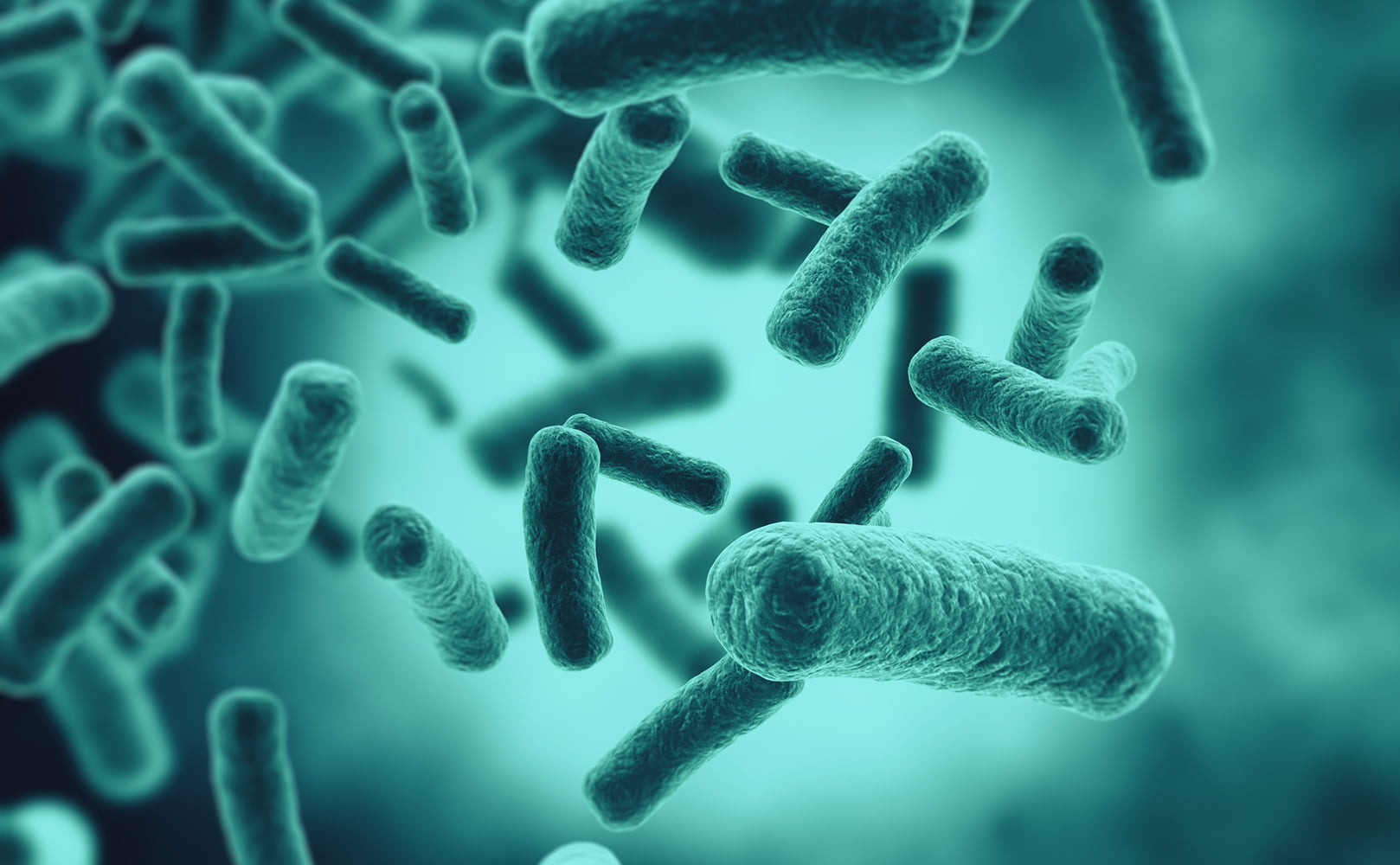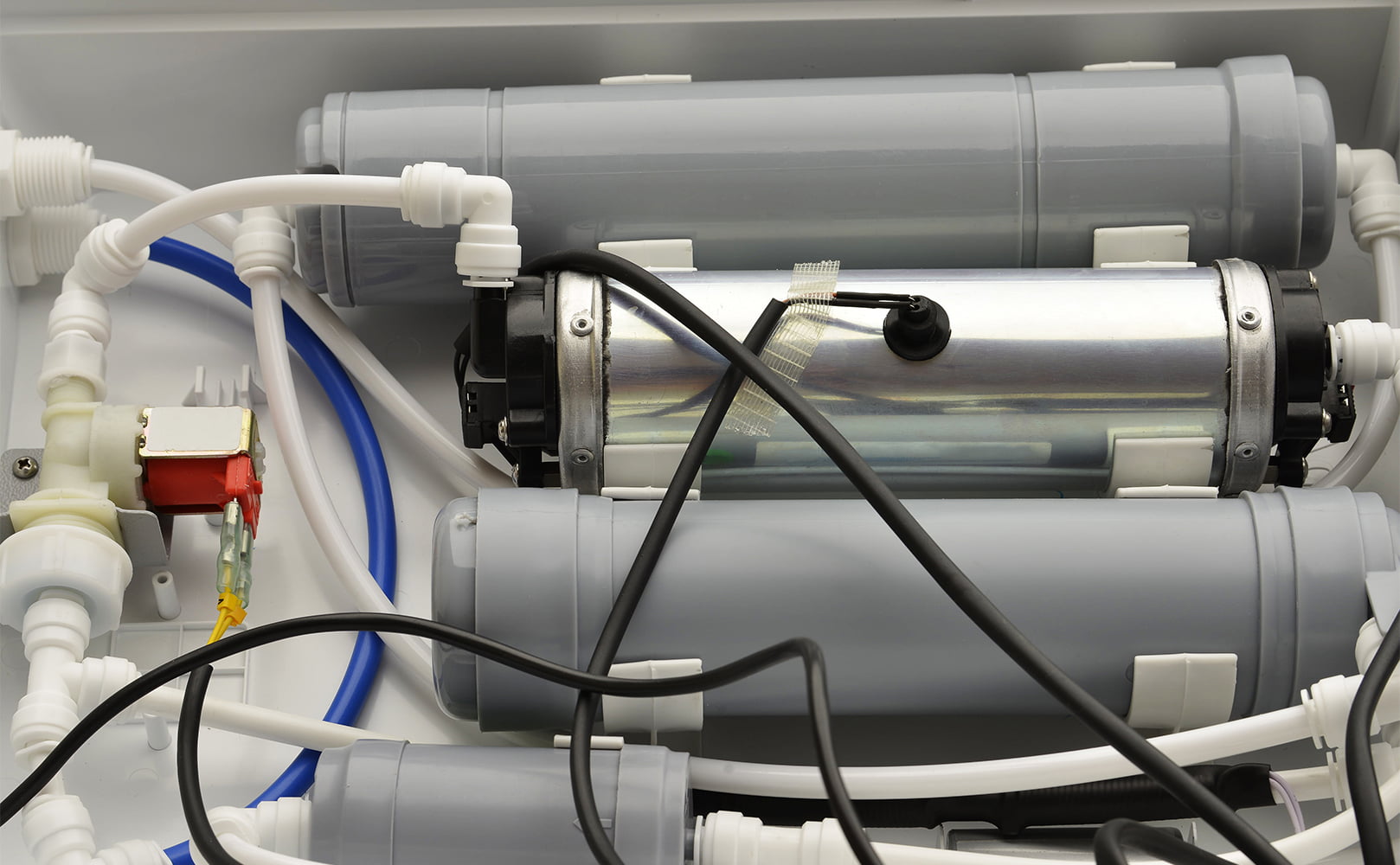Do I Need a UV Filter for My Water Supply?
Written by: Gene Fitzgerald // Last Updated: Nov 15, 2022
This page may contain affiliate links. If you buy a product or service through such a link we earn a commission at no extra cost to you. Learn more.
Often the best way to ensure your home water is free of contaminants is to take matters into your own hands, and one great way to do so is by installing a UV water filter system.
UV water filters disinfect your water supply by killing microorganisms with ultraviolet light. If you aren’t sure how they work and whether they are really necessary, you’ve come to the right place.
This article will show you how UV filters work, their pros and cons, and whether you need one.
Key Takeaways
- You should consider a UV filter for your water supply if you are concerned about microbial contamination.
- UV light effectively kills up to 99.9999% of waterborne pathogens.
- Especially water from private wells has been found to contain bacteria and other microorganisms in many cases.
Why Do I Need a UV Water System?
In many cases, water from municipal sources and especially private wells has been found to contain bacteria and other microorganisms such as giardia and E. coli.
Simply put, a UV water treatment system can destroy up to 99.9999% of these waterborne pathogens.
When to Use a UV Water Purifier
If you are concerned about microbial contamination in your drinking water, you should consider installing a UV system.
Typically, a failed water test is what starts a person’s journey through the world of water filtration, especially if they live in a rural area. Water tests may indicate that coliform bacteria, such as E. Coli, are present. Harmful microorganisms such as these can be detected by any laboratory that analyses water. Once they have been identified you must act immediately.
Chlorine is a powerful oxidizer. It is toxic to bacteria and other pathogens in water when introduced. The problem is that chlorine also reacts with some of the naturally occurring compounds in water, resulting in toxic byproducts which you should avoid when it comes to drinking water.
UV, on the other hand, does not affect the water’s quality. Germs and bacteria are simply killed as they travel under the UV lamp. That said, UV treatment is ineffective in removing any water contaminants or improving the water’s taste or odor, which is simply not its intended use.
Is a UV Filter Necessary When on Municipal Water?
Although municipal water suppliers must follow certain safety regulations, once the water leaves the treatment facility it can pick up bacteria and other diseases.
In the event of a natural disaster or if you fear your water contains dangerous microbes, a UV system is one of your best options.
Pros & Cons of Ultraviolet Water Treatment
While ultraviolet water treatment is incredibly effective in dealing with microorganisms in your water supply, it isn’t a perfect method. Like all water treatment, it has its pros and cons.
Here are the advantages and disadvantages of treating your water with ultraviolet light:
The Advantages of Using a UV Water Purifier
- UV treatment is energy efficient as it uses wattage similar to that of a standard light bulb.
- UV light is the only element used, so there is no chemical treatment. The color and taste of your water stay the same.
- Because the purification process is quick, you get clean water immediately. Such a system does not need a holding tank or reaction delay.
- Maintenance requires only a light bulb replacement once a year. No filthy parts need to be disposed of.
- Kills up to 99.9999% of viruses and bacteria in water.
- UV disinfection is an environmentally friendly alternative to chlorine disinfection since it produces no byproducts.
- It’s reliable – it works 24 hours a day, seven days a week, keeping your water safe (you won’t need to test your water regularly).
- Particularly effective against some waterborne cysts when compared to chlorine or chloramine.
- UV purification wastes no water.
The Disadvantages of UV Water Treatment
- System operation requires electricity; thus, access to electrical supply must be near. Clean water is unavailable if power goes out or is not available.
- UV filters will kill germs and viruses but will not remove any contaminants such as rust, pesticides, fluoride, or arsenic.
- Clear water is necessary for UV light disinfection to function. When the water is cloudy or contains floating particles, a pre-filter should be used. UV light cannot reach microorganisms when other particles block it.
- Water does not taste or smell different after treatment. If you wish to improve the taste and smell of your water, you need to install additional filtration.
What’s a UV Water Purifier, and How Does It Work?
The UV lamps used for UV water disinfection emit a certain wavelength of light: 254 nanometers is most effective for killing microorganisms. As a result of their length, UV light waves can break down microbes’ DNA.
During the treatment process, living organisms in the water are exposed to UV light, which destroys their genetic code (DNA/RNA), making them unable to function and reproduce.
If a microbe can no longer replicate, it can no longer infect other species with which it comes into contact with. By exposing water to UV light, up to 99.9999% of hazardous microbes can be destroyed without using any chemicals.
What Does It Remove?
UV Treatment addresses many pathogens, including:
- E. coli
- Vibrio cholerae
- Salmonella typhi
- Shigella sonnei
- Hepatitis A virus
- Poliovirus Type 1
- Rotavirus SA11
- Cryptosporidium parvum oocysts
- Giardia lamblia cysts
Parts
Four major components make up a UV system:
- UV Controller: the UV ballast or controller unit is the UV system’s brain. No matter the size or complexity of UV units, all controllers accomplish the same thing: they control the output of the lamp and power the UV-C light necessary for water purification. Some UV systems use a simple controller, but some use a more sophisticated device that incorporates alarms, lamp change times, trouble indicator lights, and other features.
- UV Chamber: This component houses the UV sleeve and lamp and controls the flow of water.
- UV Lamp: a UV lamp emits germicidal UV-C light. The exact type of lamp used will be determined by the application and disinfection requirements, as different lamps perform different roles.
- Quartz Glass Sleeve: a UV system’s quartz sleeve is a long, cylindrical tube. Quartz glass tubes protect the UV lamp. UV light is emitted into the water through the tubes.
- UV sensor: a UV sensor is an option for most UV systems that monitors and indicates the intensity of ultraviolet radiation. If the lamp’s intensity falls below a certain threshold, an alert is activated even though the lamp is on.
- Flow meter: Found in some UV systems, a flow meter estimates the required UV dose delivered for a given flow rate, ensuring that water is correctly treated.
Is a UV Water Purifier Safe to Use?
UV purifiers are perfectly safe and effective when used correctly. Unless specified by the manufacturer, they should only be used in clear or slightly hazy water. In murky or muddy water UV purifiers should not be applied.
To kill all organisms, the light must be able to penetrate the confined water. Muddy or murky water prevents UV light from penetrating and reaching all microorganisms. In these situations, another type of filter or the addition of pre-filters is recommended.
Reasons for Not Using a UV Water Purifier
While an excellent choice overall, UV purifiers are not perfect systems and have situations where they are not the preferred choice. Consider the following reasons why a UV purifier might not be for you:
- Even though a UV water purifier eliminates bacteria, viruses, and other germs that pollute water, all other contaminants remain unchanged.
- UV water purifiers disinfect non-potable water and make it safe to drink. However, overly dirty water cannot be treated. UV water filters should be used only after the water has been cleaned of solids and other particles. Thus, there may be an additional expense in addition to the UV water filter.
- In case of a power outage, you will not have any disinfected water to drink.
- The operation of a UV water purifier cannot be seen by the naked eye. As a result, you may drink contaminated or untreated water in case you don’t know that the cleaner has stopped working.
If you have any thoughts about the question, is a UV water filter necessary, please don’t hesitate to leave a comment below!
Information provided on BOS is for educational purposes only. The products and services we review may not be right for your individual circumstances.
We adhere to strict editorial guidelines. Rest assured, the opinions expressed have not been provided, reviewed, or otherwise endorsed by our partners – they are unbiased, independent, and the author’s alone. Our licensed experts fact-check all content for accuracy. It is accurate as of the date posted and to the best of our knowledge.



